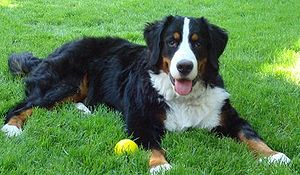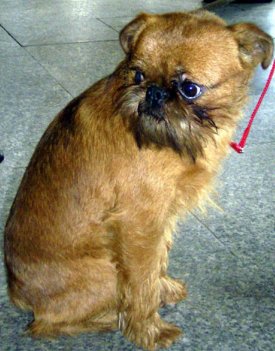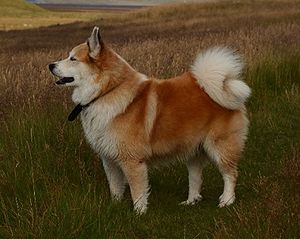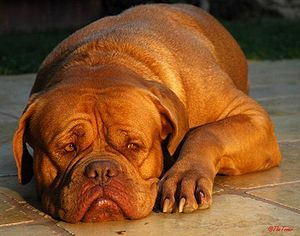 |
| Vital Statistics: |
| Place of Origin: Switzerland |
| Group: Working dog, Guard dog |
| Height: males 25-27 1/2 in., females 23-26 in. |
| Weight: males 90-120 lbs., females 70-100 lbs. |
| Life span: 6-8 yrs. |
| Trainability: high |
| Good with children: yes |
| Good with other pets: yes |
What is the origin of the Bernese Mountain Dog?
The Bernese Mountain Dog, one of 4 varieties of Swiss Mountain Dog, has been well-known in Switzerland for 100s of years. It is thought to have been brought there by the invading Romans. The Bernese is known in Switzerland for pulling carts of cheese and milk down mountain paths.
What does the Bernese Mountain Dog look like?
The Bernese is a large, muscular dog, 23-27 1/2 inches tall and weighing 70-120 lbs. depending on gender. The massive head is short. Eyes are dark. Ears are medium size, triangular with rounded tips and hang close to the head. The bushy tail is carried low. The double coat is long, thick and can be slightly wavy or straight. Color is tri-color (black with rust and white markings). The coat needs twice weekly brushing except when shedding. Then daily brushing is required.
What is the temperament of the Bernese Mountain Dog?
The Bernese is a loyal, intelligent, obedient dog. But as with all dogs, even though the Bernese is biddable, it needs early obedience training. Bernese love children and are good with other pets. They should live indoors with their family. A daily moderate walk should keep them fit. They love cold weather, but are not suited for hot climates. Sadly, the lifespan of these magnificent dogs is short, 6-8 years.
What is the Bernese Mountain Dog used for?
The Bernese is an excellent cart dog and can be easily taught to pull heavy loads. It also does well in agility trials. The Bernese is a certified therapy dog and moves carefully around patients in spite of its size. The Bernese is a loving family companion.
Possible Health Issues
Bloat/stomach torsion, hip/elbow dysplasia, progressive retinal atrophy, von Willebrand’s disease, eye problems, degenerative myelopathy, Wobblers’syndrome, kidney disease, epilepsy, cancer.
- Akbash Dog
- Alaskan Malamute
- Anatolian Shepherd Dog
- Appenzell Mountain Dog
- Belgian Malinois
- Boxer
- Canaan Dog
- Chinook
- Deutscher (German) Pinscher
- Doberman Pinscher
- Dogue de Bordeaux
- Estrela Mountain Dog
- German Spitz (Giant, Standard, Toy)
- Giant Schnauzer
- Great Dane
- Greater Swiss Mountain Dog
- Greenland
- Irish Red & White Setter
- Kai Ken
- Korean Jindo Dog
- Kuvasz
- Laika
- Leonberger
- Newfoundland
- Norwegian Elkhound
- Rat Terrier
- Rottweiler
- Saint Bernard
- Samoyed
- Siberian Husky
- Standard Schnauzer
- Tibetan Mastiff
- Akbash Dog
- Anatolian Shepherd Dog
- Black Russian Terrier
- Boerboel
- Bullmastiff
- Ca de Bou
- Cane Corso
- Chinese Shar-Pei
- Chow Chow
- Estrela Mountain Dog
- Fila Brasileiro
- Giant Schnauzer
- Great Pyrenees
- Hokkaido Dog
- Kai Ken Dog
- Kangal Dog
- Karelian Bear Dog
- Kerry Blue Terrier
- Komondor
- Kuvasz
- Mastiff
- Neapolitan Mastiff
- Norwegian Elkhound
- Presa Canario
- Pyrenean Mastiff
- Rafeiro do Alentejo
- Rhodesian Ridgeback
- Rottweiler
- Sanshu
- Shikoku Inu
- Tibetan Mastiff
- Tosa Ken



